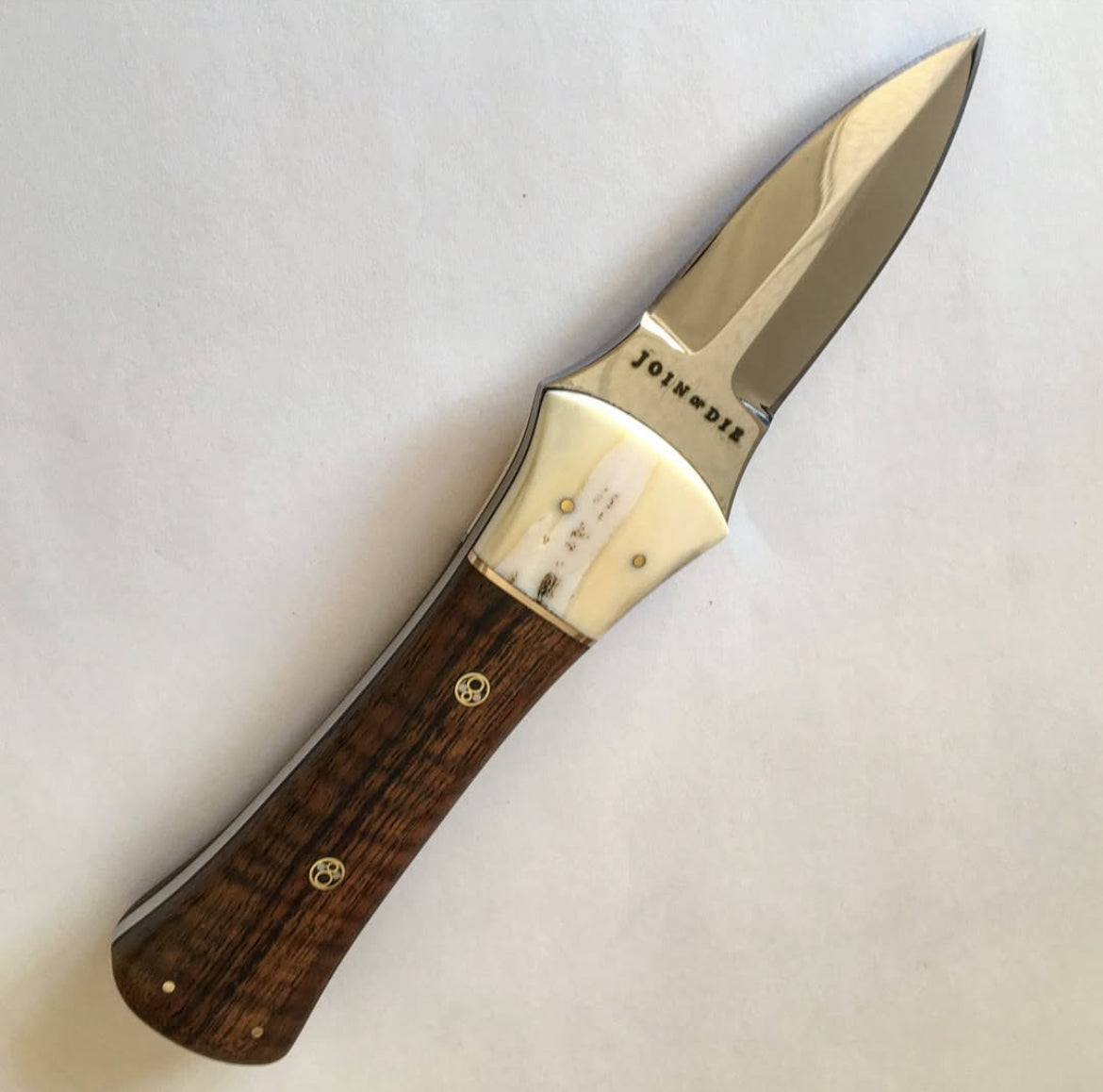
Lee and the EK dagger
One fateful day sometime in the first couple years I was operating at my first Valley road shop location, a very interesting man popped into the shop unannounced. He was an older grizzled man with an oversized military surplus jacket with many pockets, round wire rimmed glasses and well worn trousers and boots. He stood shorter than average but long years as a machinist likely stooped him further. Lee Byers was his name and he was a legend at the flea markets and gun shows of the area. Not only an expert but a veritable poet of vulgarity, we learned to expect him to appear when we least expected him. When we met him, he was keeping the machines at a saw mill running but he had worked as a machinist at many different manufacturing facilities. An expert at his craft, it seems as if his personality may have been the reason he bounced around as much as he did. We never had a problem but I could always detect a rebellious gleam in his eye.
The reason he came to see us was that he used to work grinding knives in Richmond in the 1990’s for EK Knives. A now defunct brand that has become highly collectable, EK knives made daggers that were sometimes used in military deployments. When he first came in and told us this, he must have sensed skepticism because he asked for a piece of steel and a large contact wheel on the grinder. He then proceeded to grind out a small tulip shaped dagger from memory. Although I didn’t know it at the time, it was very close in shape to a classic EK dagger. I asked him then if he minded if I used the design to which he replied in colorful language that the so-and-so’s over at EK still owed him money and they were all you-know-what’s anyway.
The dagger he ground out that day helped me develop my Ace dagger which started as a very small boot knife and then graduated to a large “extra medium” version which we still use today. I have since acquired an EK boot knife and although the designs are not identical, one can see the similarity. I didn’t know it then but I was continuing the conversation between knife makers over time. Using one design to influence another and connecting the tradition through the generations, we are carrying the torch. This is no different than when the apprentice learns from a master in a formal setting or teachers pass on knowledge to students in an academic setting. In all cases human technology and knowledge are being preserved for the future.
Lee continued to come up for air every now and then, seeming to blow in with the wind and out again. Once we added a Bridgeport Mill and LaBlond lathe we began to see more of him. He really loved to work on those old machines, cleaning and tramming the ways and showing us how to use them properly. He would trade his help for time on the equipment to do his own projects. Always producing a surprising trove of gadgets and tools from his prodigious pockets, he new a little about everything and much about many things. Lee drove an old yellow F100 pickup that we all wanted and he always threatened to sell but never really would. I suppose he was still puttering around in it when he died. I found out one day when a mutual friend called to let me know. I would have loved to be at his funeral but I don’t know if there was much of one. He seemed to indicate that he didn’t have many family relationships but he had his people and we were some of them.
As the General Manager of the Ek Commando Knife Company in the early 1980s when it was a subcomponent of the now defunct The American Historical Foundation, I remember both Lee Byers and Gary Ek well. Lee’s work appear to have matured over the years and I am glad to know that some one still remembers Ek. On my late Fathers death, Bob Buerlein of AHF, presented me with an Ek Commando honouring his Army service in WWII, Korea and Vietnam. He also presented me with another when I retired from Active Duty in 2002. Thank you.
You may already know but the surviving EK son is still in business. https://www.facebook.com/JohnEkKnives There was a deal made with one of the family members and KABAR a while back that disappointed the family and true fans. Now that Spartan bought KABAR it looks like there are some better projects coming out like the George-Eishewitz folders.